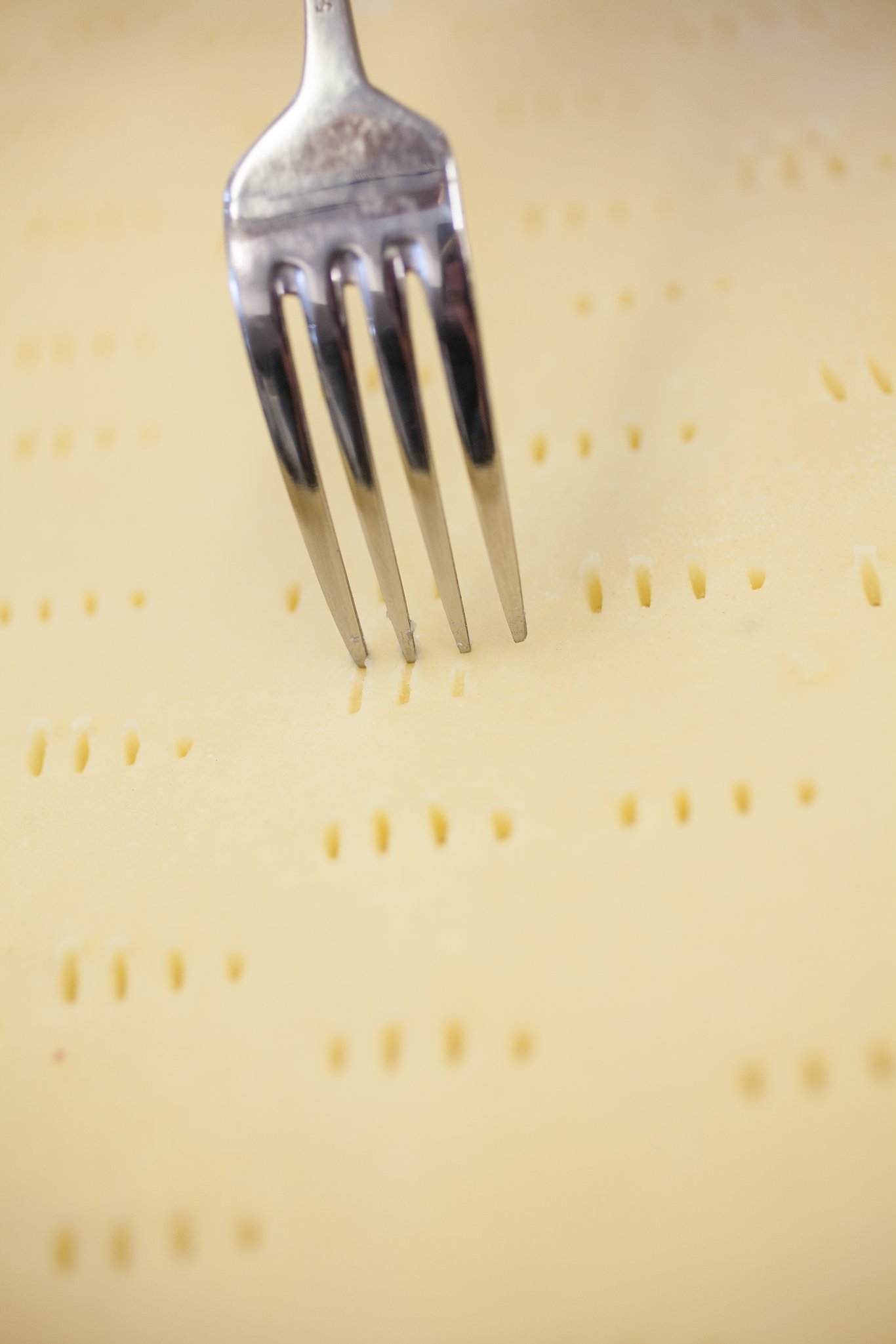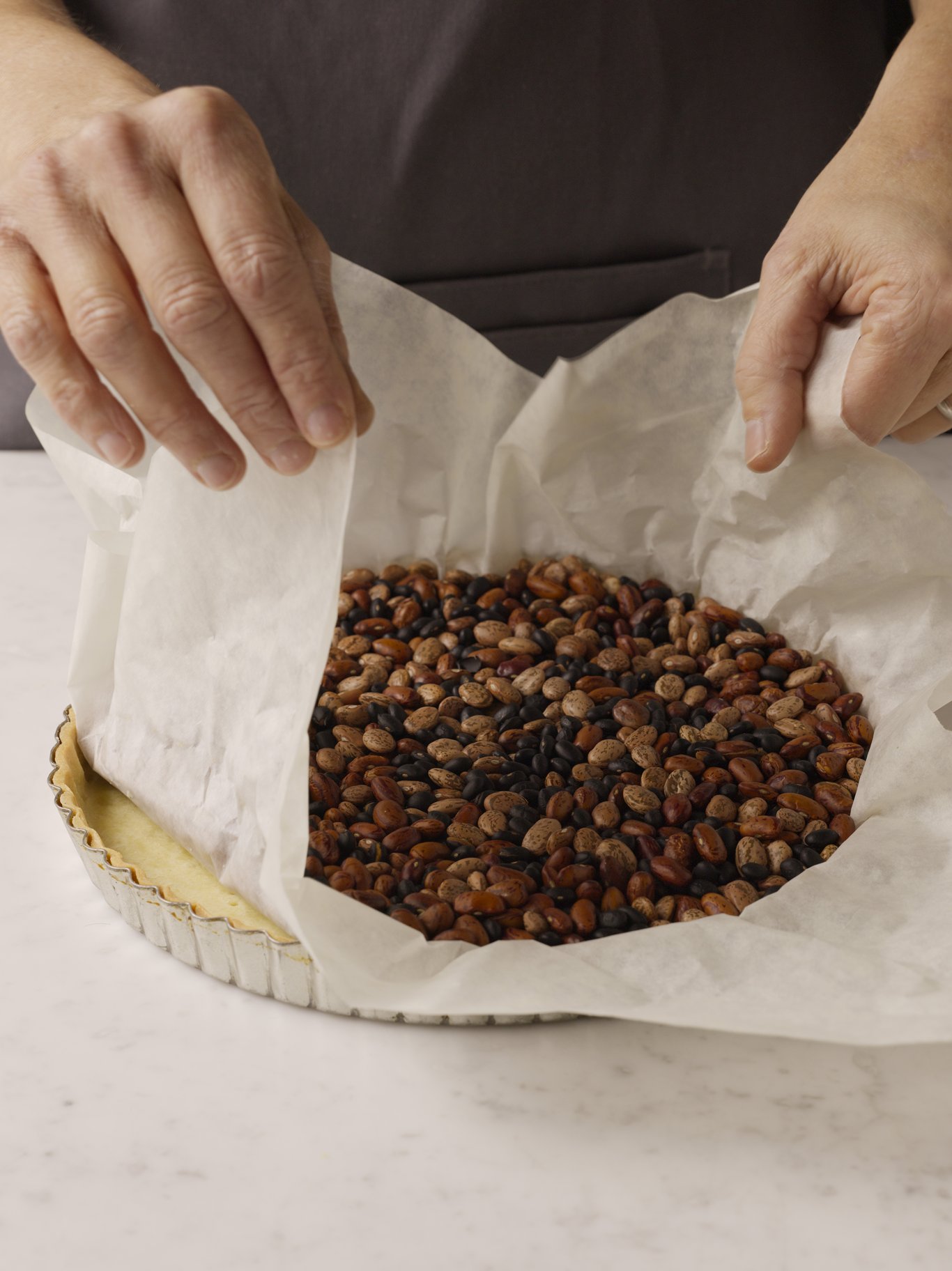Many pie and tart shells require partial baking (par baking) or fully prebaking the empty crust prior to filling. This method is termed blind baking. A pie or tart shell can benefit from partially baking before filling if it will be filled with a fruit that produces a significant amount of moisture during baking, or a liquid filling such as custard. Otherwise the liquid will prevent the crust from fully baking and create a dense and gummy bottom crust. Additionally, a shell may be fully baked if it contains a filling that does not require further cooking, like a fresh fruit tart.
When blind baking a crust, it is essential to fully chill the formed shell in the refrigerator for at least 1 hour, or in the freezer for 30 minutes, prior to baking to ensure that the shell will retain its shape. To prevent the sides from collapsing and the bottom crust from rising and creating irregular bubbles in the shell, it must first be pricked at regular 1-inch intervals with the tines of a fork; this is known as docking the dough.

The pastry shell must be lined with parchment paper (you may also use foil or a round fluted-style coffee filter). It is helpful to spray the parchment with nonstick cooking spray to keep it from sticking to the dough. Fold and fit the paper to the slope of the pan and avoid using waxed paper as a liner; it is not designed to withstand the high temperature of the oven.
Fill the pie shell with weights. Weights can range from inexpensive and reusable dried beans or rice to specialty ceramic or metal baking weights. Cover the surface of the bottom crust with weights until they just come up the sides. Do not overfill or the weights will make indentations in the crust.

The oven should be preheated 15 to 20 minutes before baking and should initially be set at a higher temperature for the first 10 to 15 minutes of baking to create a crispy bottom crust. The weights are then gently removed and the oven temperature is reduced.
For a partially baked shell that will continue to bake after filling, bake only for 5 to 10 minutes after removing the weights, or until the bottom crust is a pale, golden brown. Then add the filling and bake according to the instructions.
For a fully baked shell, bake approximately 10 to 15 minutes, or until the crust is a light golden brown. If the edges of a pie or tart shell are beginning to brown excessively, cover them with a foil ring or a pie edge shield.
When filling a prebaked or par baked pie or tart crust with a wet filling, it is helpful to create a barrier between the liquid filling and the crust to prevent the custard or the fruit juices from causing the crust to become soggy and dense. Sealers, such as egg wash, egg whites, or a flour-and-water paste, can be brushed onto the bottom crust after the weights are removed during blind baking. As the crust continues to bake, the sealers form a barrier. The flour-and-water paste is best utilized for sealing any cracks visible in a bottom crust
Other sealers, such as chocolate or preserves, can be applied after the crust is fully baked. These preserve the crispness of the crust and create a flavorful barrier.
Now that you know how, use this technique to make one of our favorite savory recipes: Roasted Cauliflower, Gruyère, and Parmesan Tart.
